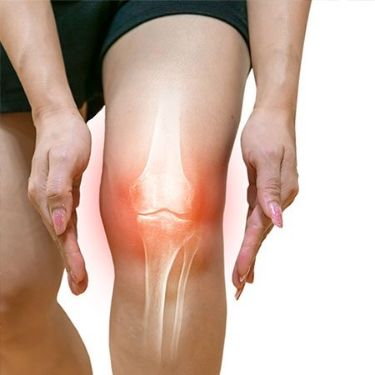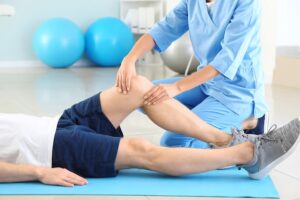Knee pain is a common issue that affects people of all ages. Whether it’s due to an injury, arthritis, or general wear and tear, knee pain can significantly impact your mobility and quality of life. Fortunately, there are numerous strategies and treatments available to relieve knee pain and restore knee function. This comprehensive guide will cover a range of effective methods to help you make your knee great again.
Tapentadol, the main ingredient in Aspadol 100, is a prescription drug. Tapentadol is an opioid painkiller that can help with moderate to severe pain, mild to moderate chronic pain, and urgent pain after surgery or an accident. Lower the severity and length of pain from many sources, such as recent injuries from accidents or surgeries and long-term conditions like arthritis, cancer, or back pain.
1. Understand the Causes of Knee Pain
Before diving into remedies, it’s essential to understand the potential causes of knee pain. Common causes include:
- Injuries: Sprains, strains, torn ligaments, meniscus tears, and fractures can cause knee pain.
- Arthritis: Osteoarthritis, rheumatoid arthritis, and other types of arthritis can lead to chronic knee pain.
- Overuse: Repetitive activities, excessive exercise, or improper technique can cause overuse injuries.
- Patellar Tendinitis: Inflammation of the tendons connecting the kneecap to the shinbone can cause pain, especially in athletes.
- Bursitis: Inflammation of the small fluid-filled sacs (bursae) that cushion the knee joint can cause pain.
Understanding the root cause of your knee pain is crucial for choosing the appropriate treatment.
2. Maintain a Healthy Weight
Carrying excess weight puts additional stress on your knees, increasing the risk of pain and injury. Losing weight through a balanced diet and regular exercise can reduce the pressure on your knees and alleviate pain. Focus on a diet rich in fruits, vegetables, lean proteins, and whole grains, and avoid processed foods and sugary drinks.
Tapsmart 200 This is a type of medicine that has tapentadol as its main ingredient. We use tapentadol, an opioid painkiller, to treat both short-term and long-term pain, as well as mild to severe pain. Attaching to opioid receptors in the brain and spinal cord is how it works. This reduces the emotional response and feeling of pain.
3. Exercise Regularly
Regular exercise is vital for maintaining knee health, strengthening the muscles around the knee, and improving flexibility. Here are some recommended exercises:
- Low-Impact Aerobic Exercises: Activities like swimming, cycling, and walking can improve cardiovascular health without putting excessive strain on your knees.
- Strength Training: Strengthening the quadriceps, hamstrings, and calf muscles can provide better support for your knees. Exercises like leg presses, hamstring curls, and calf raises are beneficial.
- Flexibility Exercises: Stretching exercises can improve flexibility and reduce stiffness. Incorporate stretches for the hamstrings, quadriceps, and calves into your routine.
- Balance and Stability Exercises: Activities like yoga and tai chi can improve balance and stability, reducing the risk of falls and knee injuries.
4. Use Proper Techniques and Equipment
Using the correct techniques and equipment can prevent knee injuries and alleviate pain:
- Warm-Up and Cool Down: Always warm up before exercising and cool down afterward to prevent injuries.
- Proper Footwear: Wear shoes that provide adequate support and cushioning. Replace them when they show signs of wear.
- Knee Braces and Supports: Knee braces and supports can provide additional stability and relieve pain, especially during physical activities.
5. Incorporate Rest and Recovery
Giving your knees time to rest and recover is crucial, especially after intense physical activities:
- Rest: Avoid activities that aggravate your knee pain. Resting your knees can prevent further injury.
- Ice Therapy: Apply ice packs to the affected area for 15-20 minutes several times a day to reduce inflammation and numb the pain.
- Elevation: Elevate your knee when resting to reduce swelling and promote healing.
6. Try Over-the-Counter Pain Relief
Non-prescription pain relievers, such as ibuprofen or acetaminophen, can help reduce inflammation and alleviate knee pain. Always follow the recommended dosage and consult with a healthcare provider if you have any concerns.
7. Explore Complementary Therapies
Several complementary therapies can provide relief from knee pain:
- Massage Therapy: A professional massage can relax tense muscles, improve circulation, and reduce pain.
- Acupuncture: This traditional Chinese medicine technique involves inserting thin needles into specific points on the body to relieve pain and promote healing.
- Chiropractic Care: Chiropractors can perform adjustments to improve alignment and reduce pain.
8. Practice Mindfulness and Stress Reduction
Stress can contribute to muscle tension and exacerbate knee pain. Incorporating mindfulness and stress reduction techniques into your daily routine can help:
- Meditation: Regular meditation can reduce stress and promote relaxation.
- Deep Breathing: Practice deep breathing exercises to relax your muscles and reduce stress.
- Progressive Muscle Relaxation: This technique involves tensing and then relaxing different muscle groups to reduce overall tension.
9. Wear Supportive Footwear
Wearing shoes that provide proper support and cushioning can help reduce knee pain, especially if you spend a lot of time on your feet. Avoid high heels and choose shoes with good arch support and a cushioned sole.
10. Use Assistive Devices
Using assistive devices can help prevent strain on your knees:
- Knee Supports and Braces: These can provide additional support when standing or walking.
- Canes and Walkers: These devices can help distribute weight and reduce the strain on your knees.
11. Stay Mindful of Movements
Be aware of how you move and make adjustments to prevent straining your knees:
- Avoid Prolonged Sitting or Standing: Take breaks to move around if you sit or stand for long periods.
- Adjust Your Workspace: Ensure your desk, chair, and computer setup support good posture and reduce strain on your knees.
12. Consider Professional Help
If your knee pain persists or worsens, consider seeking professional help:
- Physical Therapy: A physical therapist can design a personalized exercise program to strengthen your knees and alleviate pain.
- Medical Treatment: In some cases, medications, injections, or surgery may be necessary. Consult with a healthcare provider to explore these options.
13. Stay Positive
Chronic pain can take a toll on your mental health. Staying positive and maintaining a proactive approach to managing your pain can make a significant difference. Surround yourself with a supportive network of family and friends, and consider joining a support group for people with chronic pain.
Conclusion
Knee pain can be a challenging condition, but with the right strategies, it is possible to find relief and improve your quality of life. From maintaining a healthy weight and staying active to exploring complementary therapies and seeking professional help, there are numerous ways to manage and reduce knee pain. By incorporating these must-try hacks into your daily routine, you can take control of your pain and enjoy a healthier, more comfortable life. Remember, making your knee great again is not an overnight process, but with consistent effort and a positive mindset, you can achieve significant improvements.








